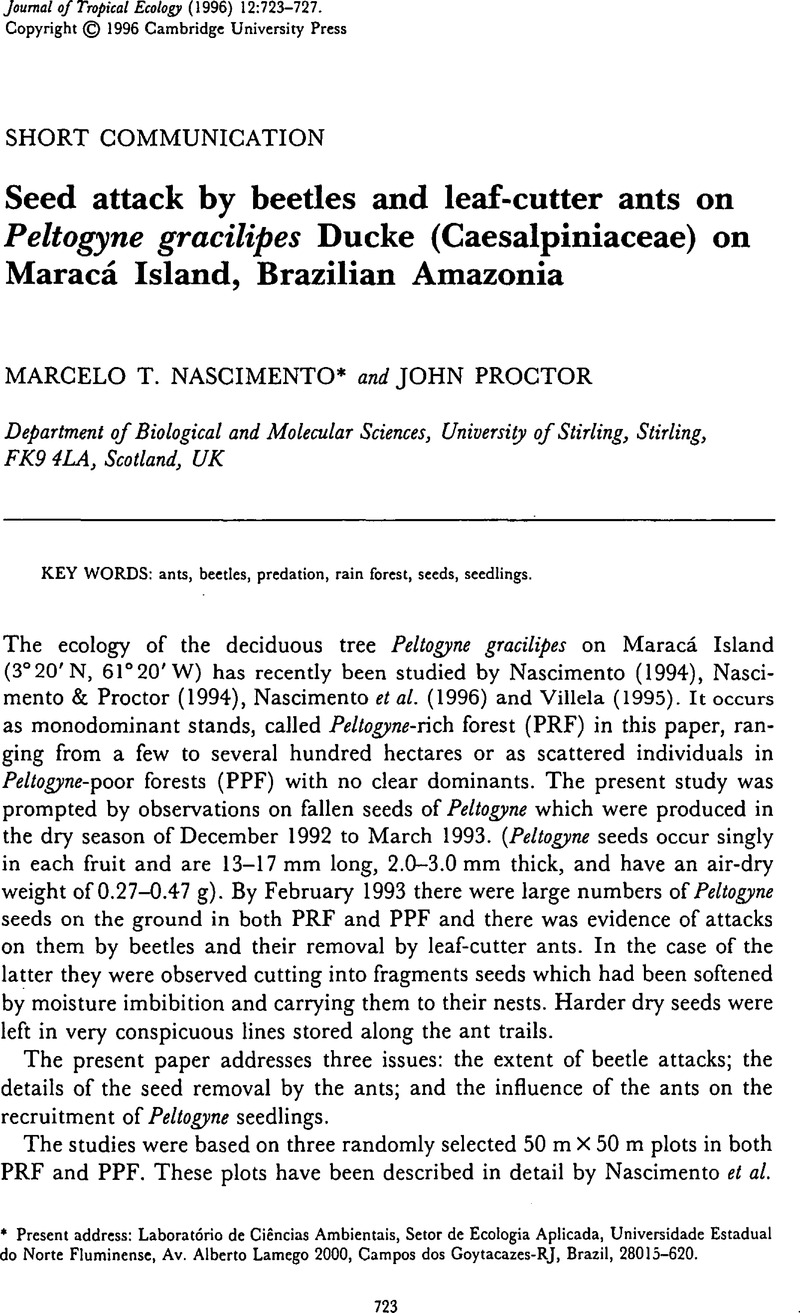Crossref Citations
This article has been cited by the following publications. This list is generated based on data provided by Crossref.
Nascimento, Marcelo T.
and
Proctor, John
1997.
Population dynamics of five tree species in a monodominant Peltogyne forest and two other forest types on Maracá Island, Roraima, Brazil.
Forest Ecology and Management,
Vol. 94,
Issue. 1-3,
p.
115.
Mendes Pontes, A. R.
and
Chivers, D. J.
2007.
Peccary movements as determinants of the movements of large cats in Brazilian Amazonia.
Journal of Zoology,
Vol. 273,
Issue. 3,
p.
257.
Marimon, Beatriz Schwantes
Felfili, Jeanine M.
Fagg, Christopher William
Marimon-Junior, Ben Hur
Umetsu, Ricardo K.
Oliveira-Santos, Claudinei
Morandi, Paulo S.
Lima, Herson S.
and
Terra Nascimento, André R.
2012.
Monodominance in a forest of Brosimum rubescens Taub. (Moraceae): Structure and dynamics of natural regeneration.
Acta Oecologica,
Vol. 43,
Issue. ,
p.
134.
Montoya-Lerma, James
Giraldo-Echeverri, Carolina
Armbrecht, Inge
Farji-Brener, Alejandro
and
Calle, Zoraida
2012.
Leaf-cutting ants revisited: Towards rational management and control.
International Journal of Pest Management,
Vol. 58,
Issue. 3,
p.
225.
Souza, Isys Mascarenhas
Funch, Ligia Silveira
and
Queiroz, Luciano Paganucci de
2018.
Pollination of Peltogyne chrysopis: an endemic tree of the Atlantic Forest.
Acta Botanica Brasilica,
Vol. 32,
Issue. 3,
p.
493.



